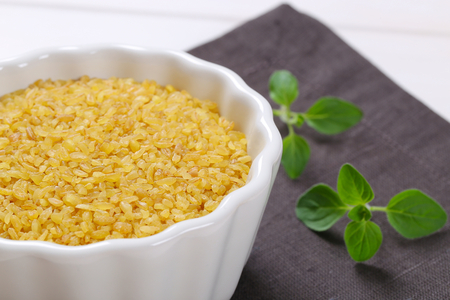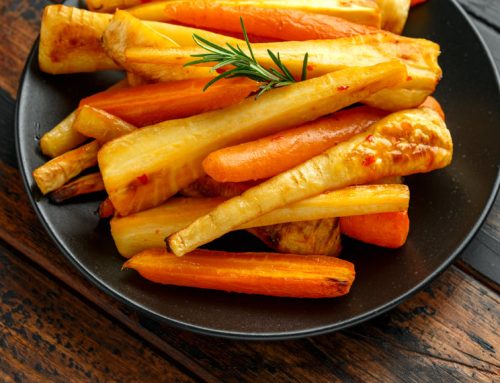Wondering how to use bulgur? It’s one of the nutritious grains that we hear about but seldom use in cooking.
Health Benefits of Bulgur
Bulgur wheat is an ancient grain that packs a nutritional punch into each nutty bite. Bulgur mixes well with herbs and vegetables. Here’s how to use bulgur: it’s the main ingredient in popular Middle Eastern dishes such as tabbouleh (bulgur salad) and kibbeh (a kind of meatball).
People make bulgur by boiling, drying, and grinding kernels of wheat. The result is a firm grain that you can eat plain like rice or couscous, or an ingredient for soups, recipes, and baked goods. Cooks usually boil bulgur, but it can also be fried, baked, roasted.
Bulgur wheat’s health benefits come mainly from its high-fiber content as a whole grain. High-fiber grains help you with digestion, gut health, and weight management. The FDA even affirms that high-fiber, low-fat diets help reduce the risk of cancer and prevent coronary heart disease. Some specific examples of bulgur wheat’s health benefits include:
Weight Management
A high-fiber diet is strongly linked to weight loss. Eating fiber increases feelings of fullness and nourishes your gut bacteria without you having to consume too many calories. High-fiber diets also help slow the absorption of fats and sugars in the small intestine, which helps your body manage blood sugar levels and increase metabolism. As a high-fiber food, bulgur wheat makes an excellent addition to a fiber-rich, low-fat diet and can help anyone manage their weight.
Healthier Blood Sugar Levels
• Numerous studies over the last decade have shown that eating more whole grains leads to lower rates of type II diabetes. Eating whole grains has been associated with healthier blood sugar levels and enhanced insulin sensitivity, which in turn helps with managing conditions such as diabetes.
• Scientists are unsure of whether these benefits come from fiber or other compounds in the grain, but they agree that whole grains such as bulgur wheat help improve your body’s blood sugar control.
Reduced Risk of Heart Disease
• Eating bulgur wheat will protect your heart health and help prevent cardiovascular disorders and heart diseases. One study found that for every 10 grams of fiber added to a diet, the risk of death from coronary heart disease dropped by 17–35%.
• Another study found a significant decrease in heart disease risk (up to 20%) in people who ate 50 grams of whole grains a day.
How to Use Bulgur: Brussels Sprouts Cranberry and Bulgur Salad
Ingredients (makes 5 servings)
• 1/3 cup dried bulgur
• 1 cup boiling water
• 1/2 pound Brussels sprouts (2 cups)
• 1/2 cup dried cranberries
• 1/4 cup chopped nuts (any type)
• 1/4 cup orange juice
• 2 Tablespoons vegetable oil
• 2 Tablespoons vinegar
• 1/4 teaspoon salt
• 1/4 teaspoon pepper
Directions
1. Cover bulgur with boiling water and let stand until soft, about 30 minutes. Pour off any excess water.
2. Rinse and trim Brussels sprouts. Cut in half lengthwise then slice crosswise into thin strips.
3. In a large bowl combine bulgur, Brussels sprouts, cranberries and nuts.
4. In a small bowl or jar with a lid, combine orange juice, oil, vinegar, salt and pepper. Mix or shake well. Pour dressing over salad and serve.
5. Refrigerate leftovers within 2 hours.
Notes:
• No nuts? Use sunflower or pumpkin seeds.
• No dried cranberries? Use any type of dried fruit
Nutrition (per serving)
Calories 190
Fat 10g
Sodium 130mg
Carbs 26g
Fiber 4g
Total Sugars 14g
Includes 8g Added Sugars
Protein 3g
Click here for more information about how to use bulgur.







